
V.I. Warshawski is back, as cranky and committed as ever. And author Sara Paretsky has a few pet peeves and projects of her own.
Photo: Steven E. Gross
Just try separating Sara Paretsky the crime writer from Sara Paretsky the crusader. The real-life causes that she espouses—aiding the powerless and disenfranchised—are echoed in the cases taken on by her fictional detective, V.I. Warshawski.
Unlike her hard-knocks heroine, though, Paretsky has not been shot at, firebombed, or tossed in the slammer for her pains. But this pioneering author, credited with creating the first modern hard-boiled female PI, has often put herself in the line of fire, risking the wrath of readers as well as higher authorities. “I write about things that I feel passionately about,” says the acclaimed author, who was awarded the British Crime Writers’ Association’s Cartier Diamond Dagger for lifetime achievement in 2002. “If I’m just going through the motions, then I’m bored and the reader is bored.”
“Boring” is not a word any Paretsky fan would use to describe Victoria Iphigenia Warshawski or the 12 edgily entertaining, intellectually engaging and intricately engineered novels that she has fueled. Since V.I.’s ground-breaking debut in 1982’s Indemnity Only, Paretsky has had her Chicago shamus fearlessly take on political, police, and corporate corruption, while fighting fiercely, and often in frustration, to right social and moral wrongs. Along the way she paints a vibrant mural of a city and its people struggling with their troubled past, present, and future. What other metropolis could give rise to both a Barack Obama and a Rod Blagojevich?
But it’s been four years since Vic (don’t call her Vicki) was last spotted on the South Side, four years since she was shot in the head, bound, and left for dead on a garbage heap. Though battered in body and spirit, this Windy City pitbull did not leave the crime scene with her tail between her legs. “Actually, I think V.I. got off easy in Fire Sale,” her creator says.
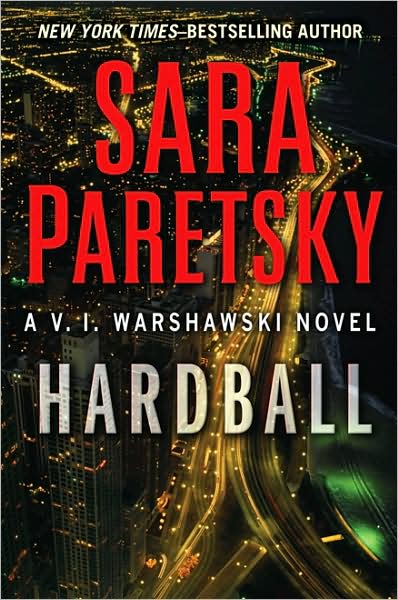 So Paretsky has upped the ante in Hardball, her 20th book and 13th entry in the series, published by Putnam in September 2009. As both Paretsky and Vic’s most passionate and personal journey yet, it was worth the wait. Even the usually self-critical author agrees, “I think it’s the best in the series.”
So Paretsky has upped the ante in Hardball, her 20th book and 13th entry in the series, published by Putnam in September 2009. As both Paretsky and Vic’s most passionate and personal journey yet, it was worth the wait. Even the usually self-critical author agrees, “I think it’s the best in the series.”
Early on, V.I. reveals the reason for her absence: extended R&R with a lover. But Paretsky hasn’t had that luxury. As during her last series hiatus—between 1994’s Tunnel Vision and 1999’s Hard Time—the author has been more than busy. Back then, she produced her first nonseries novel, Ghost Country (1998) and the short-story collection Windy City Blues (1995). Her most recent interval brought us Bleeding Kansas (Putnam, 2008), a family saga set in an isolated farming community near Lawrence, Kansas, where the Iowa-born Paretsky was raised; Writing in an Age of Silence (Verso, 2007), a memoir that collects many of her powerful essays and speeches, and was a finalist for the National Book Critics Circle Award; and the afterword to a new edition of The Brothers Karamazov (Signet, 2007). “So it’s not as though I’ve been sleeping this whole time.” Paretsky yawns, fighting jetlag from the most recent stop on her book tour. “Funny… Hard Time, Hardball… What will it be after my next break? Maybe Hardtack?”
Paretsky found the inspiration for her latest Warshawski while editing Sisters on the Case (Signet, 2007), a short-story anthology celebrating the 20th anniversary of Sisters in Crime, the support network for women mystery writers that Paretsky founded in 1986. Her own contribution to that collection, “A Family Sunday in the Park,” gives us a ten-year-old V.I. working her first case, her trademark temper and rule-breaking righteousness already fully developed. Set during the anti-segregation march led by Martin Luther King on August 6, 1966, “Tori” rushes headlong and headstrong into the real-life violence against the protestors in Chicago’s Marquette Park.
“It was a pretty lame story, if I say so myself,” admits the straight-shooting Paretsky. “But it made me aware that I really wanted to revisit the summer of ’66 and write about it in a better way than I had done. That’s when I first came to Chicago to do community-service work—or ‘terrorism’ as some would call it.” She adds, “I’m glad I’m not running for President of United States. It doesn’t matter what you say or do, it will be twisted and held up and used as evidence against you.”
Back then, though, Paretsky was a 19-year-old student just arrived from the University of Kansas to help in a summer youth program, educating children about civil rights. On the day of the march, she and two coworkers came upon a church rectory in their neighborhood that had been set ablaze by rioters incensed over the Catholic archbishop’s support of open housing. Aware that all the city’s firefighters would be assigned to the march, the three put out the fire themselves. “Everything about that summer changed my life,” Paretsky says. After graduating with a degree in political science in 1968, she returned to live there permanently, eventually earning a Ph.D. in history and an MBA from the University of Chicago, while also involved with community-service groups.
When a fire heats up Hardball, V.I. does not escape unscathed either, physically or emotionally. Delving into a 40-year-old disappearance connected perhaps to the murder of a black activist during the riots, she digs up another dirty chapter of the city’s past that some would like to keep buried. In the process, Vic also unearths a dark secret about her deceased and beloved father, Tony—a revelation that surprised even Paretsky.
“I admire writers like Elizabeth George and Phyllis James who write comprehensive outlines,” she says. “I think it saves time down the road. But I can’t think in that way. It isn’t until I’m actually writing about characters and putting them into motion that I see how to move the story.
“When I started Hardball, I wanted Tony Warshawski to be the good guy that V.I. remembers. But as the characters interacted with each other, I realized that Tony couldn’t be flawless. He couldn’t have been ignorant to what was happening around him, even if he wasn’t to blame. He had to make compromises that V.I. doesn’t have to make. He had a wife and child to provide for, while she has the luxury of not having to be responsible for anyone but herself.”
V.I. gets a taste of that burden in Hardball, when her college-age cousin Petra shows up on her doorstep and then almost as suddenly disappears, perhaps related to Vic’s current case. But don’t expect Warshawski to go all motherly now that she is nearing menopause.
“Even though it’s a big age difference, her feelings are more sisterly than maternal,” says Paretsky. “Petra’s personality is so different both from V.I.’s and from mine. I couldn’t have her be like a ‘baby V.I.’—who would want another morose, sullen, cranky Warshawski around? V.I. even feels a little jealous that Mr. Contreras is so taken with Petra. He says, ‘Doll, you can learn something from her. Remember you catch more flies with honey,’ and V.I. says, ‘Yeah, if all you want is a whole lot of dead flies.’”
You can be sure, though, that sunny Petra—who takes her protected upbringing for granted—will hang around awhile to learn a thing or two from her independent, street-smart relative. These lessons may be as timely now as they were in the 1970s, when Paretsky, working in the male-dominated insurance industry as a marketing manager, first envisioned V.I. An antidote to the female victims and vamps in Chandler-esque crime fiction, she heralded a Golden Age of women sleuths and crime novelists. But Paretsky is concerned that the pendulum has swung back the other way.
“I’m disturbed that the depiction of women today is as troubling as it was 20 years ago when we started Sisters in Crime,” she says. “There is a reification of women which not only continues apace, but young women seem to feel that it’s totally appropriate and desirable to be reified. You still read books where women are sexual aggressors—what fantasy is that about?—and the relentless rape scenarios. Then in Hollywood, it’s still all about being a hooker! So the next V.I. book that I’m working on, which I’m calling The Body Project, is in response to all that.” Then self-doubt creeps into her voice. “It’s very different from Hardball and that worries me too. I worry about everything! People are really responding to Hardball and I think, ‘Oh, God! They’ll hate the new book, because it’s totally different.’ So it’s a struggle to write. I’m compulsive and anxiety prone, so I don’t have the capability of just letting this roll off me as I wish I did.”
Paretsky seems just as uncertain of any influence her previous work may have had. “V.I. and, of course, Kinsey Millhone and Sharon McCone did open the floodgates for a lot of other voices and writers. But it wasn’t that I was revolutionary. It was that I had something to say that the audience was ready to hear.
 “My first V.I. book came out the same year that Chicago first let women be regular police officers and take the detective exam. So, there was already a sea change in women’s lives. I had wanted to create a hard-boiled woman for eight years before I actually got the courage to try writing for publication. So maybe if I had done it ten years earlier, V.I. would have disappeared without a trace just because readers weren’t ready to connect to that sensibility earlier.
“My first V.I. book came out the same year that Chicago first let women be regular police officers and take the detective exam. So, there was already a sea change in women’s lives. I had wanted to create a hard-boiled woman for eight years before I actually got the courage to try writing for publication. So maybe if I had done it ten years earlier, V.I. would have disappeared without a trace just because readers weren’t ready to connect to that sensibility earlier.
“Even so, my readership grew very slowly—my first book sold 3,500 hardcover copies. It wasn’t until the sixth book that I was a national best-seller. Publishers don’t have that luxury anymore. In today’s climate I probably wouldn’t even have been published. The independent bookstores that hand-sold me, brought me to the attention of readers—most no longer exist either.”
She frets too that books themselves may soon be obsolete. When reminded of an interview she gave in 1996, she sighs, “Oh, before e-book readers! I want magazines and books and newspapers and print. I want it to be then, not now.
“The only way I know how to pick a book is to hold it. It’s like shopping for clothes. People do it online, but you never know if it’s going to look good on you. The same thing with books. Until you have actually tried it on in the bookstore, you don’t know if it’s the right fit for you.
“What is even more frightening is that you don’t own an e-book. Whoever sells it can pull it anytime they want. We’re increasingly worried about surveillance and who is tracking us—that means that anyone who wants to can follow your reading habits and they can take it away from you any minute too. So, if you want to have control over your library, buy the damn book! That is my message to America and I’m standing by it!”
It’s hard to imagine that Paretsky would not stand by or speak up for anything that captures her passion. But in Writing in an Age of Silence, Paretsky revealed that at one time she barely spoke above a whisper. Her parents, though highly educated activists themselves, raised her to follow a more traditional path, putting her in charge of her four brothers. The boys went to top colleges away from home, while Paretsky was sent to a secretarial school nearby. On her own, she worked her way through the local university.
“I think that was a reflection not so much of an ideological bent of my parents, but of their emotional neediness,” she says now. “They needed someone to look after them and the girl would be that person. But I think I was just lucky to be coming of age at the time of the women’s movement, the countervailing voice to what I was getting at home. I think otherwise I had a good chance of following my mother’s footsteps and being just a bitter, angry, underutilized woman, underchallenged.
“Still, I think it did leave me with a permanent inability to know what I want and to only worry about what the people around me want. I realize that it has also affected how I write about V.I. That bothers me—that she also seems to have a knee-jerk caretaker response. Somebody comes to her in trouble and she can’t say no. I wonder if the same character with a different psychology would approach those cases differently.”
Yet Paretsky’s relationship with her often-prickly protagonist is clearly symbiotic. Paretsky’s compassion softens V.I., while V.I.’s righteousness strengthens Paretsky. “When V.I. is on her high horse lecturing to people, she is really lecturing me. I’m a person who does duck away in crucial moments, and I hate myself for it. So she is always kind of pissed off with me too.”
But no one else would ever accuse Paretsky of ducking a fight. In speeches and op-ed pieces, she has been openly supportive of reproductive rights and openly critical of Bush Administration policies. And don’t get her started on Dick Cheney. “I decided Dick Cheney is really a flesh-eating zombie,” she says, only half in jest. “No one could really be alive with all those hard issues. Whenever something goes wrong in my life, like I lose my glasses, I know that Dick Cheney has been messing with my stuff.”
Then, in Blacklist (2004), V.I. rammed against McCarthyism and the Patriot Act. Soon after it was published, Paretsky was to give a talk at an Ohio public library on how the Act was affecting writers, readers, and libraries. It was the night of the Iraq invasion and Paretsky was asked to change her topic. Hands gripping the podium to keep them from shaking, she instead delivered her intended speech. The audience gave her a standing ovation.
She has also received fan letters from former President Bill Clinton. But other readers have been incensed with some of her stances, and have let her know it. Those looking to escape into a traditional mystery novel might not like being confronted by the plight of minimum-wage workers and illegal immigrants (Fire Sale), of Holocaust survivors and descendants of slaves (Total Recall) and prison abuse (Hard Time). “A web reviewer commented that ‘Sue Grafton always makes you feel good and Sara Paretsky always makes you feel bad’—or words to that effect,” she says with a rueful laugh. “Well, first of all, no matter how much I like Sue as a person and as a writer, you never like being told that your sister is cuter than you are.” Paretsky sounds weary again, though not from jetlag. “But it’s true. I wish I could write in a way that many, many readers would respond to, but you have to write what you need to write. Or maybe I’m just not a good enough writer to write beyond myself.”
Bleeding Kansas seems to come from that need. The recent novel, about two heartland farm families nearly torn apart by societal changes and the Iraq War, draws on Paretsky’s earlier background. “I come from Kansas and I never imagined that I had a word to say about it. Then suddenly I found that there was a lot that I wanted to write about that area. I think that this is probably the best book I’ve written—not that it’s flawless! I never really solved the problem of how to do the story trajectory without a V.I.-type dramatic action scene. It would have been a better book without that. But I guess my mind runs on those paths. Still, I love the chance to write more lyrically, for lack of a better word, than is possible in the V.I. stories.”
The research into her home state’s history also prompted her to start writing a young adult book set there in the 1850s. Perhaps because she still has some personal territory left to explore, the journey “home” from her second standalone to her series was more difficult. “After Ghost Country, I loved being back in V.I.’s voice. So I was sort of surprised that it wasn’t easy to come back after Bleeding Kansas. But I don’t think it’s because I’ve run out of what I want to say about V.I.”
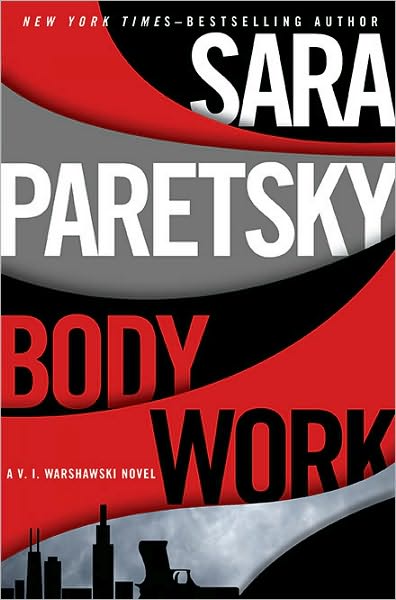 Some of the struggle may have been in wanting to reassure patient, long-time fans that the heart of the series hadn’t changed. “Lotty [Herschel, Vic’s friend and mentor] is the second most important person to readers after V.I., so I knew people would want to see Lotty again,” Paretsky explains. “But it’s not easy to bring her into the stories in a natural way. With Hardball, there wasn’t really anything for her to do. But finally I figured out how to give her some face time.”
Some of the struggle may have been in wanting to reassure patient, long-time fans that the heart of the series hadn’t changed. “Lotty [Herschel, Vic’s friend and mentor] is the second most important person to readers after V.I., so I knew people would want to see Lotty again,” Paretsky explains. “But it’s not easy to bring her into the stories in a natural way. With Hardball, there wasn’t really anything for her to do. But finally I figured out how to give her some face time.”
For similar reasons, Paretsky doesn’t foresee V.I. in a long-term affair. “Each relationship has to be part of the story. If it’s not, well, then it drags down the action. And more so with a lover.” Paretsky herself is enamored of V.I.’s new neighbor, a musician. “But I realized that he is living next door, so that’s not good! He’s going to have to go on a West Coast tour.”
She mulls over possibilities for future plots. “My husband thinks it’s time that V.I. dealt with vampires,” she laughs. This leads her, naturally, to analyze the current fascination with the supernatural. “It’s interesting to me that 19th-century vampires were terrifying, yet 21st-century vampires are protective and consoling. I have a feeling it’s because our lives are so full of fear these days and we want the reassurance of immortality and of comfort. So the vampires are playing a much different role.”
Her own literary focus is on realities that are less comforting, and after 27 years of championing social reforms in fiction, she reflects unsparingly on her own role. “I’ve not been able to change the world. I’ve not been able to liberate myself let alone three billion other women. Add that to the state of publishing and the fact that books may not actually exist in another five years, and I just want to lie down and pull leaves over my head.”
Later, she tells another story. Years ago, Paretsky was contacted by a reader whose mother had died of breast cancer when the young woman was 16. “The mother had bequeathed her all the books I had written up to that point, because she felt that V.I. was a person she wanted looking after her daughter in her absence.
“I still hear from a number of young women who feel that connection to V.I.’s voice. Then I think, ‘That’s the difference that I feel that I’ve made, giving support to young women and also to older women.’ Somehow, it feels like a sacred trust.”
Then Sara Paretsky, crusader and crime writer, says, “I’d rather have that than the Nobel Prize.”
Sara Paretsky Reading List
THE V.I. WARSHAWSKI SERIES
Body Work (2010)
Hardball (2009)
Fire Sale (2005)
Blacklist (2003)
Total Recall (2001)
Hard Time (1999)
Tunnel Vision (1994)
Guardian Angel (1992)
Burn Marks (1990)
Blood Shot (1988)
Bitter Medicine (1987)
Killing Orders (1985)
Deadlock (1984)
Indemnity Only (1982)
SHORT STORIES
Windy City Blues (1995)
STANDALONE NOVELS
Bleeding Kansas (2008)
Ghost Country (1998)
NONFICTION
Writing in an Age of Silence (2007)
This article first appeared in Mystery Scene Holiday Issue #112.
Read more about Sara Paretsky and the 2011 MWA Grand Master Award here.

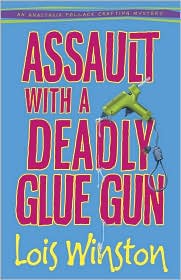 A promising new series featuring the witty and acerbic Anastasia Pollack, a New York crafts editor.
A promising new series featuring the witty and acerbic Anastasia Pollack, a New York crafts editor.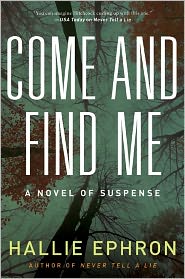 How do you write a thrilling suspense novel when the protagonist is an agoraphobe afraid to leave home?
How do you write a thrilling suspense novel when the protagonist is an agoraphobe afraid to leave home?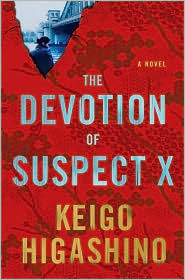 One of Japan’s most noted authors finally brings his excellent psychological puzzler to US readers.
One of Japan’s most noted authors finally brings his excellent psychological puzzler to US readers.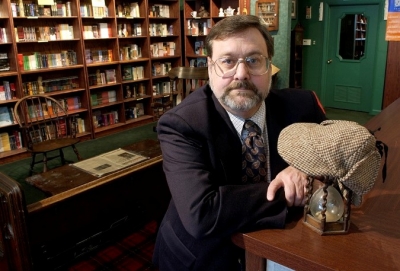 Augie Aleksy, owner of
Augie Aleksy, owner of  One of Britain’s most popular series is a Danish thriller that is the antithesis of a cop show.
One of Britain’s most popular series is a Danish thriller that is the antithesis of a cop show.
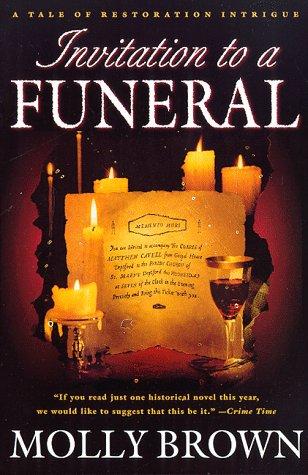
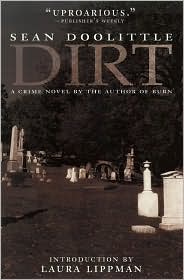
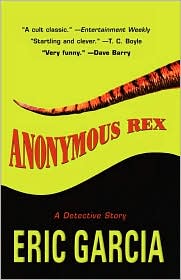
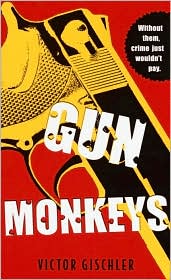
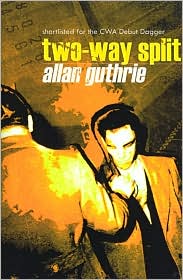
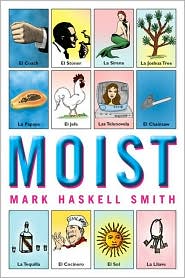
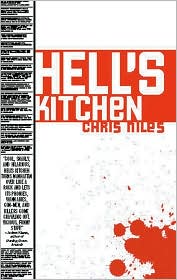
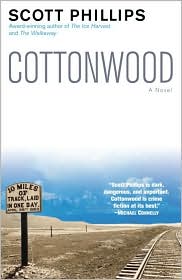
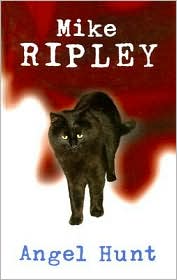
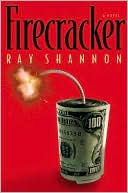

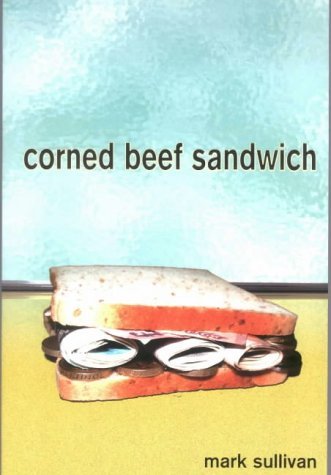
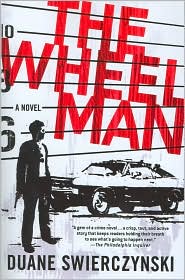
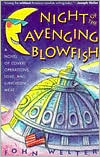
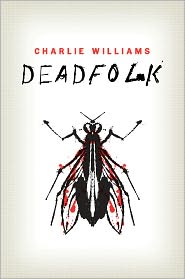
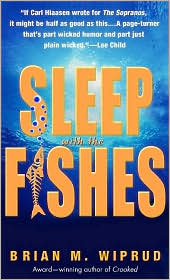

 Attention to detail is seen in episodes such as “The Tree of Death,” co-written by mystery author Simon Brett, which features a farmer’s murder by bow and arrow and a plot revolving around a yew tree. The production had to find a village complete with a church, a pub, a village hall, and a churchyard with a yew tree in it. Rosemary and Laura frequently unearth information through friendly (and not so friendly) chats with neighbors and impatient police inspectors, late-night stakeouts in gardening sheds, and less than elegant pursuits of suspects in their battered Land Rover. The likable pair display equal measures of ingenuity and haplessness in their investigations.
Attention to detail is seen in episodes such as “The Tree of Death,” co-written by mystery author Simon Brett, which features a farmer’s murder by bow and arrow and a plot revolving around a yew tree. The production had to find a village complete with a church, a pub, a village hall, and a churchyard with a yew tree in it. Rosemary and Laura frequently unearth information through friendly (and not so friendly) chats with neighbors and impatient police inspectors, late-night stakeouts in gardening sheds, and less than elegant pursuits of suspects in their battered Land Rover. The likable pair display equal measures of ingenuity and haplessness in their investigations.
 A team of sleuths delves into garden-variety skullduggery, uncovering dirt—and bodies—along the way.
A team of sleuths delves into garden-variety skullduggery, uncovering dirt—and bodies—along the way.



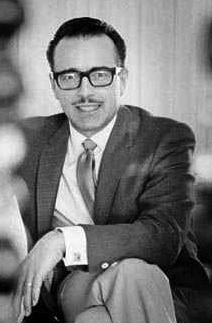 Author Ed Gorman rediscovers the Shell Scott PI novels of Richard S. Prather in this out-of-print essay.
Author Ed Gorman rediscovers the Shell Scott PI novels of Richard S. Prather in this out-of-print essay.
 When Pat Frovarp and Gary Shulze accept the Raven Award later this month, it will be among the proudest moments they’ve had since owning Once Upon a Crime bookstore in Minneapolis, Minn.
When Pat Frovarp and Gary Shulze accept the Raven Award later this month, it will be among the proudest moments they’ve had since owning Once Upon a Crime bookstore in Minneapolis, Minn.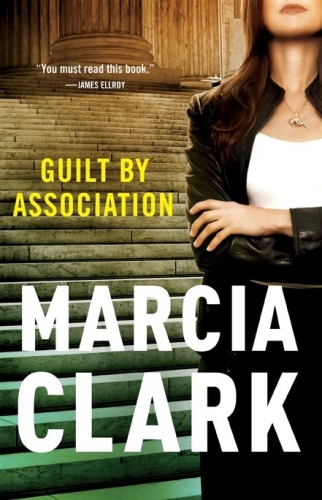 Marcia Clark’s role as the lead prosecutor in the infamous 1995 O.J. Simpson trial put her in the public eye. Since her resignation in 1997 as a prosecutor for the State of California, Clark has worked as an Entertainment Tonight correspondent and, with co-author Teresa Carpeter, wrote
Marcia Clark’s role as the lead prosecutor in the infamous 1995 O.J. Simpson trial put her in the public eye. Since her resignation in 1997 as a prosecutor for the State of California, Clark has worked as an Entertainment Tonight correspondent and, with co-author Teresa Carpeter, wrote  Q: What was your inspiration for heroine Rachel Knight.
Q: What was your inspiration for heroine Rachel Knight.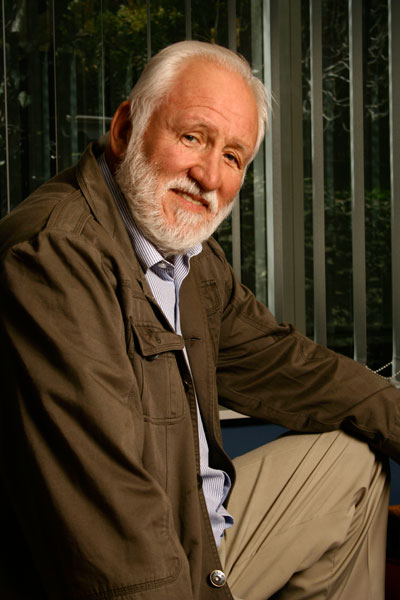 In the 1970s South African Wessel Ebersohn started writing thrillers set in that country’s harsh apartheid society. His critically acclaimed series about Yudel Gordon, a prison psychologist, was successful enough to allow him to write full-time.
In the 1970s South African Wessel Ebersohn started writing thrillers set in that country’s harsh apartheid society. His critically acclaimed series about Yudel Gordon, a prison psychologist, was successful enough to allow him to write full-time. In spring 1995, the Ebersohns talked to businessman Martin Dannheiser, an old friend. They offered him a 50 percent share if he would co-sign payment of the first printing. The next day Dannheiser called back and the entire family crowded around the phone. “Wessel, you know, you don’t need a partner, they are just a problem. What you need is a friend.” They were deeply disappointed. But then he said, “I spoke to the printer last night and told him I would guarantee the printing for a year.”
In spring 1995, the Ebersohns talked to businessman Martin Dannheiser, an old friend. They offered him a 50 percent share if he would co-sign payment of the first printing. The next day Dannheiser called back and the entire family crowded around the phone. “Wessel, you know, you don’t need a partner, they are just a problem. What you need is a friend.” They were deeply disappointed. But then he said, “I spoke to the printer last night and told him I would guarantee the printing for a year.”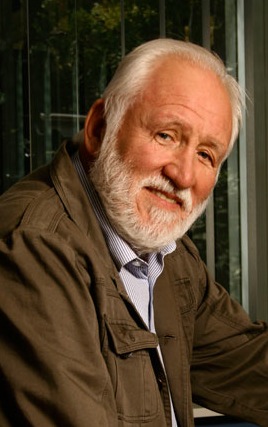 MS catches up with the author of the 1970s acclaimed thrillers set in South Africa's apartheid society.
MS catches up with the author of the 1970s acclaimed thrillers set in South Africa's apartheid society.



 The 2011 MWA Grand Master discusses what it takes to be a female shamus—and writer—in a man's world.
The 2011 MWA Grand Master discusses what it takes to be a female shamus—and writer—in a man's world.
 Raymond takes on the role of Gryce’s unofficial assistant and legman, which automatically thrusts him into what we now term “the Watson role.” But like so many detectives who would follow, Gryce also utilizes the talents of paid operatives, most notably a shadowy figure called “Q,” short for “Query,” so dubbed because of his skill as an interrogator. His real name is Morris, and in addition to his examination skills, Q is a master of disguise—in fact, in one scene he approaches the unwitting Raymond dressed as a female beggar. Another of Gryce’s agents is a man named Fobbs who, believe it or not, is assigned to watch. (Think about it.)
Raymond takes on the role of Gryce’s unofficial assistant and legman, which automatically thrusts him into what we now term “the Watson role.” But like so many detectives who would follow, Gryce also utilizes the talents of paid operatives, most notably a shadowy figure called “Q,” short for “Query,” so dubbed because of his skill as an interrogator. His real name is Morris, and in addition to his examination skills, Q is a master of disguise—in fact, in one scene he approaches the unwitting Raymond dressed as a female beggar. Another of Gryce’s agents is a man named Fobbs who, believe it or not, is assigned to watch. (Think about it.)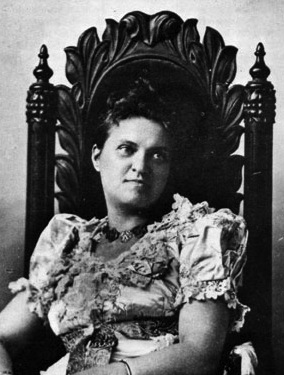 A tribute to Anna Katharine Green, the author of first American detective novel The Leavenworth Case.
A tribute to Anna Katharine Green, the author of first American detective novel The Leavenworth Case.
